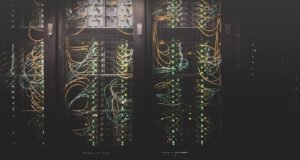AI technology has made significant advances in recent years, and its application in the field of pictures has revolutionized various industries. With the ability to analyze, process, and interpret large amounts of visual data, AI is transforming the way we capture, manage, and understand images. From image recognition and object detection to image generation and enhancement, AI is playing a crucial role in improving the efficiency and accuracy of picture-related tasks. In this article, we explore some key AI applications in the realm of pictures and examine their impact on different sectors.
**Key Takeaways:**
– AI technology has revolutionized the field of pictures, enabling enhanced image recognition, generation, and enhancement.
– AI applications in pictures have wide-ranging applications across various sectors, including healthcare, security, entertainment, and e-commerce.
– Deep learning algorithms have greatly improved the accuracy and efficiency of picture-related tasks, leading to significant advancements in computer vision.
**1. Image Recognition and Object Detection**
One of the most prominent applications of AI in pictures is image recognition. Through the use of deep learning algorithms, AI systems can now accurately identify and classify objects present in images. This technology has found its applications in various domains, such as self-driving cars, surveillance systems, and medical imaging. *AI-powered image recognition systems can identify countless objects with exceptional accuracy, aiding in automated decision-making processes.*
**2. Image Generation**
AI has opened up new possibilities for image generation, enabling the creation of realistic and high-quality pictures with just a few inputs. This technology, known as generative AI, utilizes deep learning models, such as Generative Adversarial Networks (GANs), to generate images that closely resemble real photographs. *Through AI-powered image generation, artists and designers can quickly create visual content for various purposes, ranging from advertising to virtual worlds.*
**3. Image Enhancement**
AI also plays a crucial role in improving the quality and enhancing the details of images. By leveraging deep learning techniques, AI algorithms can remove noise, enhance colors, and sharpen image edges, resulting in clearer and more visually appealing pictures. *With AI-powered image enhancement, photographers can correct imperfections in their photos and improve their overall aesthetic appeal, saving valuable time in post-processing.*
The impact and applications of AI in pictures can be better understood through data and statistics. The following tables provide a glimpse into some key figures related to AI applications in pictures:
**Table 1: Annual Revenue of AI-powered Image Recognition Market by Sector (in millions USD)**
| Sector | 2019 | 2025 (Projected) |
|————–|—————-|——————|
| Healthcare | $2,590 | $8,710 |
| Security | $2,150 | $6,930 |
| Entertainment| $1,890 | $7,760 |
| E-commerce | $1,320 | $5,380 |
**Table 2: Top AI-powered Image Recognition Systems**
| System | Vendor | Application |
|—————-|—————–|————————-|
| Google Vision | Google | Image analysis |
| Amazon Rekognition| Amazon | Facial recognition |
| Microsoft Azure| Microsoft | Object detection |
| IBM Watson | IBM | Visual search |
**Table 3: Accuracy of AI Object Detection Models**
| Model | Accuracy (mAP) | Year |
|—————-|—————-|————————-|
| YOLOv4 | 51.5% | 2020 |
| EfficientDet | 53.2% | 2020 |
| Faster R-CNN | 56.9% | 2015 |
With the increased adoption of AI applications in pictures, several industries have witnessed positive enhancements in their processes and services. For example, in healthcare, AI-powered image recognition systems have improved diagnostics accuracy and efficiency, leading to better patient outcomes. In the security sector, AI helps in real-time surveillance and threat detection by analyzing images captured from cameras. In e-commerce, AI image recognition enables more accurate product search and recommendations.
In conclusion, AI applications in pictures have transformed various industries by enabling enhanced image recognition, generation, and enhancement. With the power of deep learning algorithms, AI algorithms can accurately identify objects, generate realistic images, and improve image quality. From healthcare to security, entertainment to e-commerce, the impact of AI in pictures is undeniable, revolutionizing the way we interact with visual data and opening up new possibilities for the future.

Common Misconceptions
Misconception 1: AI Applications in Pictures are Limited to Facial Recognition
One common misconception about AI applications in pictures is that it is only limited to facial recognition. While facial recognition is a well-known AI application, there are various other applications that AI can be used for, such as:
- Object detection and recognition
- Image classification and tagging
- Image generation and synthesis
Misconception 2: AI Applications in Pictures Can Replace Human Creativity
Another misconception is that AI applications in pictures can fully replace human creativity. While AI can assist in generating content and providing suggestions, it cannot replicate the depth of human creativity. Some important points to consider are:
- AI can enhance and inspire human creativity
- Human creativity involves complex emotions and experiences
- AI can be a valuable tool for artists and designers
Misconception 3: AI Applications in Pictures are Always Accurate
There is a misconception that AI applications in pictures are always accurate. However, it’s important to note that AI systems are not infallible and can sometimes produce errors. It’s crucial to understand:
- AI algorithms are trained on existing data, which can introduce biases
- Accuracy can vary depending on the quality and diversity of training data
- Human oversight and validation are necessary to ensure accuracy
Misconception 4: AI Applications in Pictures Are Only Beneficial for Tech Companies
Some people believe that AI applications in pictures are only beneficial for tech companies. However, AI can have wide-ranging benefits across various industries, including:
- Healthcare: leveraging AI for medical imaging analysis
- Retail: using AI for personalized product recommendations
- Automotive: enabling autonomous vehicles through AI visual perception
Misconception 5: AI Applications in Pictures Will Lead to Unemployment
Lastly, there is a misconception that AI applications in pictures will lead to widespread unemployment. However, history has shown that new technologies often create new jobs and opportunities. It’s important to consider:
- AI can automate repetitive tasks, allowing humans to focus on higher-level work
- New jobs and roles will emerge in the field of AI
- Reskilling and upskilling can help individuals adapt to the changing job market

AI Applications in Shopping
In recent years, artificial intelligence (AI) has revolutionized the way we shop. From personalized recommendations to virtual try-on, AI-powered technologies have enhanced the shopping experience. The table below highlights some fascinating AI applications in the world of shopping.
| Application | Description | Benefits |
|---|---|---|
| Virtual Try-On | Using augmented reality (AR), AI enables customers to virtually try on clothing and accessories. | Reduces returns, enhances decision-making |
| Personalized Recommendations | AI algorithms analyze customer data to offer personalized product recommendations. | Increased customer satisfaction, higher sales |
| Chatbots | AI-powered chatbots provide instant assistance to customers, answering their queries. | Improved customer service, reduced waiting times |
AI Applications in Healthcare
The impact of AI in healthcare is immense. From diagnosing diseases to improving patient outcomes, AI is transforming the healthcare industry. Let’s explore some key applications of AI in healthcare through the following table.
| Application | Description | Benefits |
|---|---|---|
| Medical Imaging Analysis | AI algorithms analyze medical images, assisting in the detection and diagnosis of diseases. | Improved accuracy, early detection |
| Virtual Nurses | AI-powered virtual nurses provide personalized care plans and support to patients. | Enhanced patient engagement, reduced hospital readmissions |
| Predictive Analytics | AI predicts patient outcomes based on historical data, aiding in proactive interventions. | Better resource allocation, optimized treatments |
AI Applications in Transportation
Artificial intelligence has also made a significant impact on the transportation industry. Through advanced algorithms and automation, AI is revolutionizing transportation systems. Check out the table below for some intriguing AI applications in transportation.
| Application | Description | Benefits |
|---|---|---|
| Autonomous Vehicles | AI enables self-driving cars and trucks, transforming the future of transportation. | Improved road safety, reduced traffic congestion |
| Traffic Optimization | AI algorithms analyze real-time traffic data, optimizing routes and reducing travel time. | Efficient transportation, reduced fuel consumption |
| Smart Transportation Systems | AI systems monitor and manage transportation networks, enhancing overall efficiency. | Streamlined operations, improved logistics |
AI Applications in Education
Artificial intelligence is transforming the educational landscape by providing adaptive learning experiences and personalized education. The table below showcases several AI applications in the field of education.
| Application | Description | Benefits |
|---|---|---|
| Intelligent Tutoring Systems | AI-powered systems offer personalized guidance and feedback to students. | Improved learning outcomes, individualized education |
| Educational Content Creation | AI generates educational content, adapting to individual learning needs and styles. | Diverse learning materials, increased engagement |
| Automated Grading | AI automates the grading process, providing instantaneous feedback to students. | Efficient evaluation, timely feedback |
AI Applications in Finance
AI has brought significant advancements to the financial sector, revolutionizing processes like fraud detection and investment analysis. The table below presents some fascinating AI applications in the world of finance.
| Application | Description | Benefits |
|---|---|---|
| Fraud Detection | AI algorithms analyze vast amounts of data to detect fraudulent activities in real time. | Enhanced security, reduced financial losses |
| Algorithmic Trading | AI-powered algorithms execute high-speed trades based on market data and trends. | Improved trade execution, minimized risks |
| Customer Service Automation | AI chatbots provide quick and accurate customer support in the financial sector. | Efficient customer service, reduced wait times |
AI Applications in Entertainment
Artificial intelligence is reshaping the entertainment industry, enhancing content creation and delivering personalized experiences. Explore some captivating AI applications in the realm of entertainment through the table below.
| Application | Description | Benefits |
|---|---|---|
| Content Recommendation | AI algorithms analyze user preferences to recommend personalized movies, music, etc. | Enhanced user experience, increased engagement |
| Virtual Actors | AI-generated virtual actors are used in movies and animations, offering new creative possibilities. | Cost-effective productions, limitless character design |
| Content Creation | AI assists in the creation of music, art, and literature, collaborating with human artists. | Increased creativity, novel content |
AI Applications in Manufacturing
Artificial intelligence is streamlining manufacturing processes, boosting efficiency, and enabling predictive maintenance. The table below highlights some intriguing AI applications in the field of manufacturing.
| Application | Description | Benefits |
|---|---|---|
| Quality Control | AI systems inspect and identify defects in products with high accuracy. | Reduced defects, improved product quality |
| Supply Chain Optimization | AI algorithms optimize inventory, shipping, and pricing decisions in the supply chain. | Improved efficiency, cost savings |
| Predictive Maintenance | AI predicts equipment failure, optimizing maintenance schedules and minimizing downtime. | Reduced costs, increased productivity |
AI Applications in Agriculture
The integration of AI in agriculture is revolutionizing farming practices, improving crop yields, and optimizing resource utilization. Explore some remarkable AI applications in agriculture through the table below.
| Application | Description | Benefits |
|---|---|---|
| Crop Monitoring | AI analyzes satellite imagery and sensor data to monitor and optimize crop growth and health. | Higher yields, reduced resource waste |
| Pest Detection | AI algorithms detect and identify pests and diseases, enabling timely interventions. | Early pest management, minimized crop losses |
| Automated Harvesting | AI-driven machines automate the process of harvesting crops, improving efficiency. | Reduced labor costs, increased productivity |
AI Applications in Customer Service
Artificial intelligence has significantly transformed the customer service industry, providing quicker and more efficient support. The table below presents some interesting AI applications in customer service.
| Application | Description | Benefits |
|---|---|---|
| Automated Ticket Resolution | AI analyzes customer queries and provides automated solutions, resolving issues efficiently. | Reduced resolution time, enhanced customer satisfaction |
| Sentiment Analysis | AI algorithms analyze customer feedback to measure sentiment, facilitating better service delivery. | Improved customer understanding, personalized support |
| Customer Behavior Analysis | AI systems analyze customer data to predict behavior and tailor experiences accordingly. | Enhanced personalization, targeted marketing |
The applications of artificial intelligence across various industries have ushered in a new era of innovation. From shopping to healthcare, transportation to education, finance to entertainment, AI has transformed numerous domains, enhancing efficiency, productivity, and the overall user experience. As AI continues to evolve, the potential for its applications is boundless. Embracing these advancements can lead to a future where AI seamlessly integrates into our daily lives, making tasks easier, more personalized, and efficient.
Frequently Asked Questions
How can AI be applied in pictures?
AI can be applied in pictures through various techniques such as image recognition, image classification, image generation, and image enhancement. These techniques enable AI systems to analyze and understand images, categorize them into different classes, generate new images, and enhance the quality of existing images.
What are some real-world examples of AI applications in pictures?
Some real-world examples of AI applications in pictures include facial recognition systems used in security and law enforcement, image-based search engines that can identify objects and find related images, and AI-powered photo editing tools that automatically enhance image quality and remove imperfections.
How does AI help in image recognition?
AI uses deep learning algorithms to train models on large datasets of labeled images. These models learn to recognize patterns and features in images, allowing them to accurately identify and classify objects, faces, scenes, and other elements present in pictures.
What is the role of AI in image generation?
AI can generate new images by leveraging generative adversarial networks (GANs) or variational autoencoders (VAEs). GANs can create realistic images by pitting two neural networks against each other, while VAEs can learn meaningful representations of images and generate new variations based on the learned features.
Can AI be used for automated image captioning?
Yes, AI can be used for automated image captioning. By combining image recognition with natural language processing, AI models can analyze the content of an image and generate a descriptive caption that accurately describes the visual elements present in the picture.
How accurate is AI in image recognition?
The accuracy of AI in image recognition depends on the quality of the training data, the complexity of the task, and the performance of the AI model. State-of-the-art AI systems can achieve high accuracy rates in image recognition tasks, often surpassing human performance in specific domains.
What are the limitations of AI in picture applications?
Some limitations of AI in picture applications include the reliance on large amounts of labeled training data, the potential for biased or incorrect predictions, difficulties in handling images with low resolution or poor quality, and challenges in understanding context or semantics within images.
How can AI improve picture editing and enhancement?
AI can improve picture editing and enhancement by automating tasks such as noise reduction, color correction, object removal, and image restoration. AI-powered algorithms can learn from large datasets of high-quality images to understand what makes a good image and apply those enhancements to new pictures.
What are the ethical considerations of AI in picture applications?
Some ethical considerations of AI in picture applications include privacy concerns related to facial recognition technologies, potential biases in AI algorithms that could perpetuate stereotypes or discrimination, and intellectual property issues regarding the ownership of generated images.
What is the future of AI in picture applications?
The future of AI in picture applications holds promising possibilities. As AI continues to improve, we can expect more accurate image recognition systems, advanced image generation techniques, and enhanced picture editing tools. AI may also play a role in augmenting human creativity and enabling new forms of visual expression.





